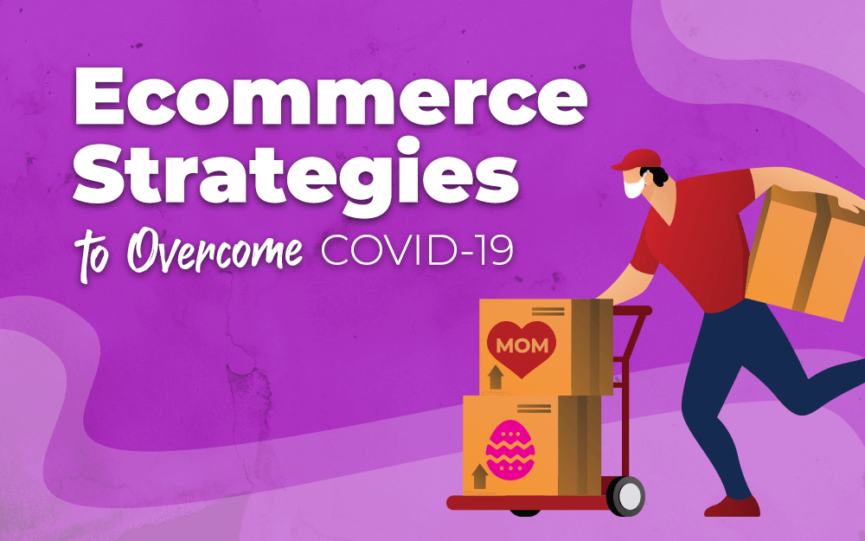The impact of COVID-19 on retail has been sudden and fierce. While portions of ecommerce are experiencing success in the midst of social distancing, others are facing significant unforeseen challenges.
As online retailers try to retain a sense of normalcy during a time that’s anything but, we must ask ourselves, “how can marketing adapt?” How can brands stay relevant during a situation that’s virtually unprecedented in the modern world? The answer is situational marketing.
Situational marketing uses cultural context to create relevant messaging that reaches consumers in a way that feels organic, helpful, and engaging during a tumultuous time. For the purposes of this post, we’ll be focusing specifically on topics related to marketing during COVID-19, and how you can turn common problems into opportunities for your business.
Turn “Out of Stock” Items Into Opportunities
The global impact of COVID-19 has caused numerous disruptions to daily life. In addition, while many in the U.S. have only recently started feeling the effects of a near-total shutdown of daily life, manufacturing in many areas, especially China, nearly ground to a halt months ago.
This has created enormous problems within the supply chains of many brands, and may continue to do so until operations can resume at full capacity. Out of stock products can cause major headaches for businesses, so how can businesses adapt in a way that’s helpful, while also positively impacting their bottom line?
Low Stock Alerts
Low stock alerts are an excellent way to notify shoppers of depleting stock. Because many supply chains are currently experiencing delays, many shoppers are likely to take these alerts seriously and convert while supplies are still available.
Showing the exact number of products remaining in stock is a great way to show shoppers why they should purchase sooner rather than later. This form of social proof drives conversions while increasing consumers’ comfort with ordering.
Back in Stock Notifications
Back in stock notifications are another simple strategy that is especially helpful during times when supplies are short. These notifications turn out-of-stock products into an opportunity for further remarketing.
When a product is out of stock, simply add an on-site option for users to be emailed when stock is replenished. This form of lead capture helps you expand your list and indicates your willingness to keep them updated during a difficult time.
Help Shoppers Convert When They Are Ready
As we all know, the economic effects of COVID have reached every strata of society. Even those who remain at work may lack confidence in their buying power.
This can have a major impact on your ability to convert shoppers. Many may want to put purchases, especially those that are non-essential, on hold for the time being. So if shoppers can’t buy right away, how can you encourage conversions down the road?
Use this time to establish a relationship with shoppers. Show that you are adjusting with the world and understand their circumstances. Let them know you will be there for them when they are ready.
Remarketing
Remarketing presents customers with the opportunity to purchase when they’re more comfortable. Even something as simple as saving a user’s cart can help users by allowing them to pick up right where they left off.
You can also add incentives to your remarketing. Even a small discount or free shipping can help users feel better about proceeding with their order. It is important to not exploit the situation, so ensure your messaging is sensitive.
Abandonment Incentives
Abandonment incentives are another useful tool for helping users feel more comfortable with purchasing.
These incentives minimally impact the bottom line by only offering discounts to users that demonstrate a strong chance of converting. Like remarketing, abandonment incentives don’t have to be large to increase conversions.
Suggest Complementary Products to Boost AOV
As COVID continues to affect buying power and consumer confidence, many sites have experienced drops in average order value. As a result, even if your conversion rate has not dropped significantly, you may have seen a decline in order values across channels.
Fortunately, there are ways to subtly encourage users to increase the order value of their cart without necessitating major changes to your site or large incentives.
Minicarts
Minicarts are a solution that recreates a user’s cart in an on-site sidebar. After a user adds an item to their cart, they are shown products that complement the one they just added. For apparel sites, this often means “completing the look,” but sites of any type utilize minicarts to increase AOV.
Recommending items like accessories, add-ons, upgrades, and any other form of complementary product are a simple way to increase the utility of the purchased product and rapidly increase AOV.
Thresholds
Another simple AOV lifting technique is to utilize threshold incentives. These easy-to-implement solutions promote high AOV by offering a benefit to users with a cart above a certain value.
They can often be implemented using offers that already exist onsite. For example, if you offer free shipping on orders of $100 or more, you can use a gamified boost bar to show shoppers how much they need to add to qualify for the incentive.
Thresholds promote increased average order value while gamifying the shopping experience to encourage shoppers to add more to their cart.
Discover More Strategies from Upsellit
Looking for more strategies? Download Upsellit’s Low Inventory Case Study to learn how to turn low stock into opportunity.
